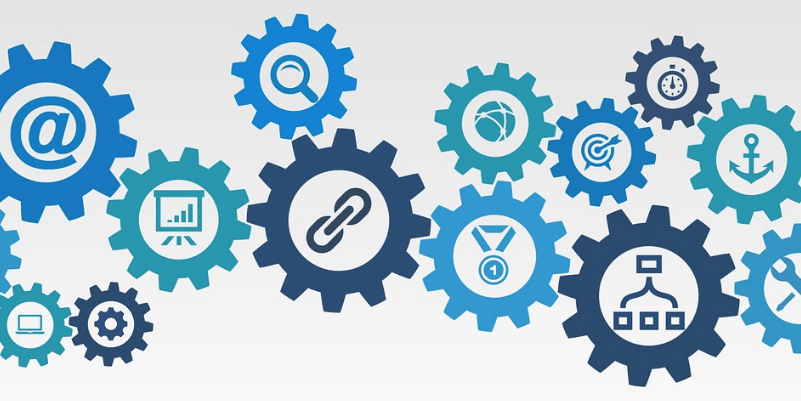 Read
Read
5 Things Every SEO Strategy Needs
Strategizing SEO is tricky.
There are tips, hacks, tricks, quick fixes, slow fixes, and marketers are always willing to share their experience. For the most part, all of these things are helpful. Admittedly, building an SEO strategy becomes a harder topic to relate to because everyones scenarios are different.
Keywords that work for us just aren’t going to work for you.
The crew at SEJ is tackling this topic today. They go through tools and questions you need to ask yourself when developing a unique, relevant, and result-forming strategy.
- A mind-map. A series of categories, a mind map builds a strategy from the ground up by moving from more general to more granular. It’s a visual tool that helps you think in a nonlinear fashion.
- A visual representation. A step up from the mind-map, keeping the plan clear and all parties on task. Recommended tools to help you create this is Google Sheets, Trello, Workzone, or Basecamp.
- An understanding of the company. Get the most value out of your SEO strategy by understanding company strengths! Consider these factors:
- What makes your company different? Is it a product/service? If so, what makes it different from competitors.
- Knowing your industry isn’t enough. Capitalize on your company’s vision statement by digging deep for ideas to drive strategic goals and metrics.
- An understanding of the audience. Marketers have a tendency to take educated guesses. But, for solid leads, this won’t help. It’s time to get down and gritty by talking to your clients/customers, send out a survey, or browse relevant platforms where your audience is hanging out. Some questions to consider:
- How accepting is your audience of marketing or upselling?
- What is their level of knowledge? (helps in prepping language)
- Is your audience interested in understanding the industry or do they only care about how a product benefits them?
- Precise goals. Throw out the dollar amounts. It’s more useful to be precise in working parts rather than solely focusing on money. Be deliberate on choosing relevant KPI’s, and shoot for a specific impact on your company.
Check out the rest of today’s Read, you know what to do!
 Read
Read
8 (or 6) Copywriting Techniques to Boost Email Conversions
Two things we really love when it comes to marketing:
- Copywriting
Both aren’t new, but if you’re not on your game with either of them, you’re gonna have a bad time with marketing.
That’s why we were stoked when we found this blog post from the Content Marketing Institute. They wrote about the copywriting techniques that will boost your email conversions. Our two fav’s in one blog post? Almost feels like CMI wrote this for us.
Rather than drag this out, let’s jump right in…
1) Write a minimum of 3 email versions. So many people go wrong right off the bat with this. Not writing multiple versions is a mistake. Here’s how you should do it:
- Start with a rough draft.
- Use it to create two variations.
- Create a third version based on those two.
- Take all versions to your team and see what they think.
2) Start email structure with a headline. Another thing a lot of people miss is the opening headline. You need it! For example, if you were writing a cart abandon email, your headline might be, “Your shopping cart is lonely.”
3) Don’t worry about length. Can’t stress this one enough. Length doesn’t matter, as long as there is substance to your writing. If your email is useful, make it as long (or as short) as you need. Moz, for example, puts entire blog posts in their emails!
4) Make it about the recipient. This is just good copywriting advice for any type of writing. Stop with the “we, us, our.” Use more “you and your.” Even if you’re announcing a new product, you can write it in a way that puts emphasis on your customer.
5) Follow CTA best practices. Have one goal and one CTA in your email. Repeating that: one goal, one CTA.
6) Use the bucket brigade copywriting method. What’s the bucket brigade method? It’s a way to grab attention and hold it from one idea to another. Here’s how it works:
- Create a line of copy that grabs attention and promises a resolution.
- Provide a resolution.
- Create another attention-grabbing line of copy that again promises a resolution.
- Provide a resolution.
- Repeat.
Dang, we’re outta time. Still two more really important points in this one…
 Watch
Watch
QuirkyMangos, DrummerRabbit, & DangerDino
Who else is notorious for coming up with ridiculous passwords like QuirkyMangos2? (Don’t go trying to log into our Facebook using that). And if you’re anything like us, you depend solely on your computer’s memory.
Then life happens. Like when you’re on vacation and work emergencies have you leaping for the nearest computer, which is somehow always a dial-up. Next thing you know you’re trying to reset a password because you don’t remember what sparked your password inspiration for the company’s Hootsuite account.
That scenario seriously just stressed us out. Thank goodness for new tech. Yapi Kredi (not a typo, that’s a real company) is a bank in Europe and is the first to implement retina ID login technology.
Helping consumers warm up to the tech upgrade, Yapi Kredi launched a commercial illustrating the frustration of forgetting your password with fun animation.
“Creativity is more important than ever, especially as more data sources become available to us.”
Chuck Hemann


